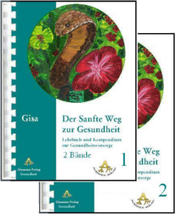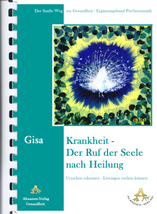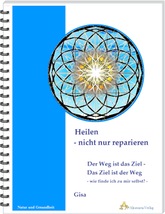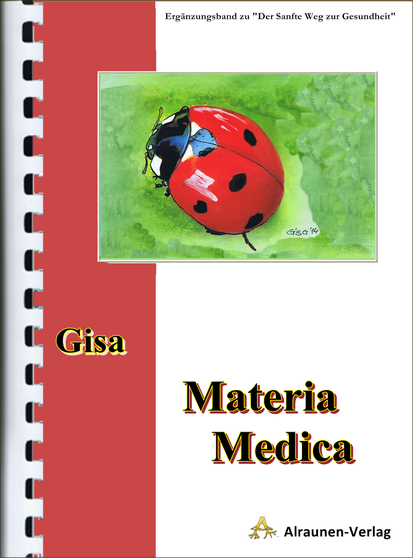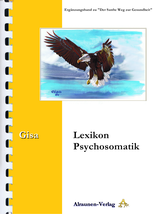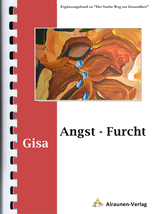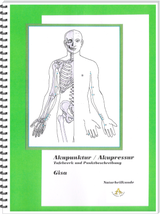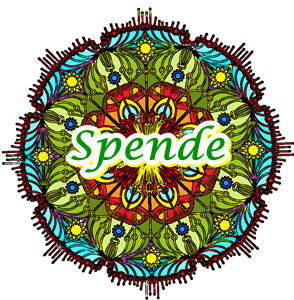Archiv für die Kategorie „9.C“
Spanische Fliege, Lytta vesicatoria, Coleoptera.
In Mittel- und Südeuropa vorkommend.
Sie müssen den im D.A.B. (Cantharides) gestellten Anforderungen entsprechen. Verarbeitung nach § 4 mit 90%igem Alkohol.
Arzneigehalt 1/10
Die physiologische Wirkung geht klar aus dem Symptomenbild hervor.
Leitsymptome:
Akute Entzündungen mit heftigsten Reizerscheinungen an Haut, Schleimhäuten, Serosa, Nieren, Blase, Ovarien, an allen Organen, wenn die typischen Blasensymptome vorliegen.
Brennschmerz, Intensität und Schnelligkeit sind die Hauptzeichen dieses Mittels, ähnlich Mercur. corros.
Krämpfe mit verzerrtem Gesichtsausdruck, Unruhe, Angst.
Schwellung, Infiltration, Blasenbildung, atzende Eiterung der Schleimhaut.
Durst groß mit Abneigung gegen Trinken.
Zusammenziehen krampfhaftes von Entzündung im Rachen. Harndrang und -Zwang mit Brennen und Schneiden in den Harnwegen.
Gelbsehen.
Verschlimmerung beim Trinken, bei Berührung und Bewegung.
Stimmung:
Aufgeregt, ängstlich, tobsüchtig.
Schleimhaut:
Brennen, Schneiden, Schwellung und Rötung, Folge von akuten Entzündungen mit Fieberbewegung und Unruhe.
Sekrete zäh, klebrig, schleimig-eitrig, auch blutig, ätzend. Steigert sehr die Sekretion, macht auch Blasen und Geschwüre.
Zusammenschnürende Krämpfe von Reizung und Entzündung, besonders am Hals, am Rektum und Blasenhals, auch Uterus.
Serosa:
Neigung zu Exsudatbildung, ein gutes Resorptionsmittel, Pleuritis, Peritonitis, Perityphlitis, Meningitis, Podagra, wenn die charakteristischen Harnsymptome vorliegen.
Haut:
Brennend, wie Feuer. Bläschen und Blasen, juckend, stechend, mit wässerigem Inhalt und atzender Sekretion.
Blasen im Gesicht von rechts nach links gehend; Fieber.
Erysipel, Pusteln, Pemphigus, Verbrennungen mit Nieren- und Blasenreizung, oft Hirnreizung und Krampfe.
Nervensystem•
Wallungen zum Kopfe; Gesicht rot und heiß, Augen funkelnd. Hochgradige Unruhe und Angst, wütende Delirien mit Bellen, Beißen, Wutanfällen, besonders bei Anblick heller Gegenstände.
Mania sexualis, Puerperalmanie.
Hydrophobie mit Schreien, Toben, Wutanfällen.
Verdauungsorgane:
Zunge:
Geschwollen, rot, trocken, wund an den Rändern, zittert.
Rachen und Schlund:
Krampfig zusammengeschnürt, schlechter bei Trinken von Wasser und Berührung des Halses.
Durst unendlich, doch Abneigung gegen Trinken wegen Schlingbeschwerden.
Brennen von Entzündung und Reizung der Schleimhaut mit Rötung und Schwellung vom Mund bis Magen dabei Fibrinbelag.
Zäher und ätzender Schleim im Hals, der sich auch in den Luftwegen findet (auch hier ist Cantharis ein gutes Mittel).
Diphtherie, Scharlach-Angina, Hydrophobie, Pharyngitis.
Magen:
Brennen, Ekel, Würgen, Erbrechen von Schleim.
Empfindlich bei Berührung, Magenkrampfe, Appetitlosigkeit. Verschlimmerung von Kaffee, der sofort Erbrechen und Blasenkrampfe macht.
Darm:
Aufgetrieben, Blähungskolik.
Durchfälle ruhrartig, schleimig-blutig mit Schneiden.
Harnorgane:
Hauptangriffspunkt des Mittels, Symptome dort fehlen nie.
Urin spärlich, oft eiweißhaltig, trübe, auch blutig.
Sediment schleimig, oft Grieß und Sand mit sich führend.
Brennen und Schneiden in Blase, Harnröhre und Nierengegend.
Harn tropfenweise abgehend, Wie geschmolzenes Blei brennend.
Harndrang und -Zwang, Dysurie zum Schreien; Strangurie.
Tenesmus an Blase und Mastdarm; Kinder zupfen am Penis.
Verschlimmerung bei Bewegung, bei und nach dem Harnlassen.
Harnröhre: schleimig-eitriger, blutiger, reichlicher Ausfluss.
Glied geschwollen, viel Erektionen, Chorda, Priapismus, besonders nachts.
Tripper akut und ohne Komplikationen. Phimose, Paraphimose.
Blase: Brennen und Schneiden am Blasenhals.
Nieren: Schmerz und Empfindlichkeit der Nierengegend bei Berührung.
Nierenentzündung und -Reizung; Steinkolik, Sand und Grieß.
Geschlechtsorgane:
Überreizung mit Blasen- und Darmsymptomen.
Erregung geschlechtliche und maßlose Geilheit bei Männern und Frauen.
Regel zu stark, schwarz; Brennen in der Ovarialgegend Treibt tote Frucht und Membranen aus.
Allgemein
Antidot bei Cantharidenvergiftung ist Camphora, auch Essig und Alkohol.
Klinisches: Wenn Nieren- und Blasenreizung fehlen, ist die Spanische Fliege selten angezeigt. Charakteristisch sind akuteste, heftigste Entzündungen mit Brennschmerz an Haut, Schleimhaut und Serosa, dabei größte Empfindlichkeit gegen Berührung infolge von Nervenüberreizung, speziell im Gebiete des Vagus. Immer angezeigt, wenn im Verlaufe von akuten Infektionskrankheiten mit schwerem Verlaufe sich Albuminurie, Dysurie oder gar Nephritis einstellen. Bei Erysipel mit Blasenbildung hat es sich mir häufig vorzüglich bewahrt, weit besser als Rhus toxicodendron; es folgt rasch Entfieberung und Heilung. Cantharis ist aber auch hilfreich bei chronischen Reiz- und Entzündungszustanden der Blase, man kann es dann längere Zeit weitergeben, ebenso bei chronischen Hautausschlagen mit scharfen Sekretionen und Brennschmerz. Bei Wechselfieber und seinen Folgen mit Harnbeschwerden und Abscheu vor Getränken war es oft epidemisches Heilmittel.
Dosis: Unter die 6. Potenz sollte man nicht ohne besondere Grande heruntergehen; ich habe mich meist der 12. Dezimaldilution bedient; je großer die Erregung und Reizbarkeit, desto höhere Potenzen, wenn man nicht starke Arzneiverschlimmerungen erleben will; z. B. würde ich bei Zuständen wie Hydrophobie, wo das Mittel deutlich indiziert ist, nur die 30. Potenz verordnen. In akuten Leiden kann man 2-3stündlich eine Gabe verabreichen; bei eintretender Besserung wird man dann die Nachwirkung abwarten. Das Mittel wirkt ebenso rasch wie sicher, und wenn man nicht in 2-3 Tagen deutlichen Erfolg hat, gehe man ruhig zu anderen Mitteln über. In chronischen Zustanden genügt täglich eine Gabe.
Wo keine örtlichen Reizzustände bestehen, scheint auch die Tinktur in Gaben von 3mal täglich 10 Tropfen mit gutem Erfolg ertragen zu werden, so bei chronischer Harnsperre und bei Amenorrhoe.
Äußerlich wird die Cantharis mit Erfolg gebraucht bei Verbrennungen, indem man 2-3 Tropfen der Tinktur in 1 Glas Wasser mit 1 Löffel Weingeist mischt und Kompressen damit macht. Bekannt sind die ableitenden Cantharidenpflaster bei Entzündungen an Gelenken usw. Das Baunscheidtöl enthält neben Ol. Crotonis gewöhnlich auch Canthariden; es wirkt ebenfalls durch die Ableitung auf die Haut gut, besonders bei rheumatischen Affektionen und bei Neuralgien.
Vergleichsmittel: Apis mellifica; Arsenicum album; Lycopodium; Sarsaparilla; Belladonna; Cannabis; Camphora; Terebinthina; Copaiva; Equisetum; Sabal serrulata; Berberis aquifolia; Veratrum album; Coccus cacti; Mercurius corrosivus; Colchicum; Urtica urens; Echinacea
Author: Maja Letić
All rights reserved
Introduction
Carbo animalis belongs to the group of small remedies and we would rarely think about it. The reason for that is because sadness and nostalgia are covered by polychrests. With good knowing of repertorium and rubrics, we can easily use small rubrics for better understanding of specific states, which lead us to the specific remedy.
We can see a lot of homeopathic remedies who dwell in the past unpleasant occurrences. Unpleasant occurrences and experiences can leave person with deep wounds, and that’s the main cause of illness for the most people. Patients often feel the loss, anger, injustice. But, only tree homeopathic remedies will have the problem of dwelling in the good old times which makes them ill. Those remedies are: Carbo animalis, Carcinosin i Saccharum album.
George Vithoulkas describes Carbo animalis in this way: „The feeling of homesickness is particularly prominent in this remedy. In the repertory we find it in bold letters, and rightly so. Very characteristic of Carbo animalis is a strong emotional attachment to the family, which is the only place he feels secure, and he always returns to this safe place, his home. In Carbo animalis people there is such a yearning for the childhood love of their parents that was experienced while at home and eventually lost in the challenges of life, that they return again and again to these feelings with an almost irresistible desire to return home. The homesickness of Carbo animalis is so acute that it is painful“.
Clark compares it to Calcarea phosphorica because it consists in itself a high percentage of Calcarea phosphorica and both remedies have indurations and suppurations, while Carbo vegetabilis doesn’t have indurations which Carbo animalis has. He explains the similarity to Cocculus because they have the same weakness and exhaustion, but points the difference between those two, because the weakness of Carbo animalis is caused by the loss of fluid, while the weakness of Cocculus happens as a consequence of the general state of the remedy.
Hahnemann puts it in antipsoric remedies.
Other authors will point the bad, changeable mood, the feeling as if everything has changed and they are forsaken from the dear ones. They want to be alone, they are indolent and passive. Many authors will say that Carbo animalis dwells in the past happy moments in the morning, when he wakes up. However, Carbo animalis has a lot of bad symptoms in the morning, and if we are only looking for the good mood in the morning as a key symptom, we could miss to prescribe this remedy if there’s no morning happiness. For a better illustration, let’s take a look at some of his rubrics:
- MIND – ANGER – morning – waking; on
- MIND – ANGER – waking; on
- MIND – ANXIETY – morning – rising – after
- MIND – ANXIETY – morning – rising – on
- MIND – ANXIETY – morning – waking; on
- MIND – ANXIETY – waking, on
- MIND – FEAR – morning
- MIND – FEAR – waking, on
- MIND – FORSAKEN feeling – morning
- MIND – HOMESICKNESS – morning
- MIND – VIOLENT – morning
- MIND – SADNESS – waking, on
- MIND – SADNESS – morning
- MIND – MOROSE – morning – waking, on
- MIND – IRRITABILITY – waking, on
- MIND – IRRITABILITY – morning
- MIND – WEEPING – morning
While Materia medica offers the skeleton of the remedy, gives the directive, we still have the hard task in connecting her words with the words of the patient. Sometimes it can be hard to recognize the way in which the patient tells us about specific rubric.
Through few cases, we will clear the image of this remedy and make it more recognizable in practice.
Case 1
In the middle of January, an old patient asked me for help. A woman 72 years old, got the spasms in her chest and she complained about having bronchitis. She had the feeling of dry lungs and she felt that if she coughs, her lungs will tear up.
Her constitutional remedy was Platina and it helped her a lot of times, especially in hysterical conditions. In acute states like this she was given Lobelia, because she often had the feelings of spasm in her chest and she gave herself the diagnose of bronchitis without medical consultation. After two or three doses of Lobelia which showed fast and strong effect, spasms disappeared and the next day she felt perfectly fine. This time she was given Lobelia again and it helped her at the moment, but the next day bad condition returned completely. The potention was raised to 200 C and the patient had the short-term improvement again. After that, she started feeling even worse than she felt at the beginning, and this time it really seemed as if she had the pneumonia.
The next idea was giving her Platina again, but that would be a by heart prescription. The patient was asked if something happened before she got sick. She told this:
Life situation
Her daughter got divorces two years ago, she got a job abroad, and she moved away with her children. The children had hard time dealing with their parent’s divorce and moving to another country and the patient was worried about them. The kids were usually on a fast food and they had digestive problems. She often traveled to see them, take care of them and cook for them. The daughter complained how she doesn’t have enough money, so she sat on an airplane and brought them the food for children, even frozen meat, fruits and vegetables and jars of honey from the market. More and more often she was absent from her job and the number of her clients started to fall.
„I’m very worried about my job“, she told me. „ I was walking down the street where my daughter used to live with her children. I saw the house where they lived and the memories came back to me. I remembered when they were younger and they were here. We went everywhere, we were on holidays together, we ate together, and everything was alive. In that moment I realized that they are gone and they will never return. I felt crazy of sadness. I was scared of dying on the street. I barely got home. After that, bronchitis appeared. I have nothing left. I’ve lost my perspective. Everything went to hell. I don’t believe I’ll ever have clients again. I wrote myself off.
The hardest times for me are the ones when I don’t have enough job. No new clients, old ones go away. I ask myself where would I go, what would I do, I’m worried that I’ll sink. I’m afraid that I won’t have enough money to pay my rent. I’m afraid of poverty.
One phase in my life is over. I’m alone. Useless.
The key of sensitivity
Nothing recognizable of Platina appeared in that statement. It had to be done again from the beginning. Few things were pointed out as important:
- Patient got in this statement after recalling the memories of the good old days when her grandchildren were there, when she had quality time with them, travelled with them and shared their joy. That was the key of her sensitivity.
- She felt sadness and she was worried.
- She felt abandoned and
- Nothing was the same. Everything changed.
We can easily follow this state through the following rubrics

The next morning she felt much better. On the question how does she feel, she answered „Detached. I detached myself from the feeling that overcame me. The only thing that matters is that we are all alive and healthy. What happened, happened.“
She needed few more days to physically recover completely, but nothing was prescribed for her physical state. She was asked to take herbal teas and syrups. She wasn’t worried about her physical symptoms anymore, so she took my advice.
Month and a half later, she was in a similar condition. She wasn’t happy because of the way the things go, but she accepts that. She told:“ The new phase of life cycle has begun. What can I do, it’s normal“. She’s still worried about her grandchildren and she helps them as much as she can, but she’s not overtaken with fear and too worry about them anymore.
Two and a half months later, she claims that she feels pretty well. She thinned her travelling to her daughter’s and she’s not depressed anymore.
Case number 2
A woman nearly 60 years old, long term patient, constitutionally was given Sulphur which helped her in almost every situation. She asked for help when she had herpes which had spread almost over her entire forehead. As she felt very well a few months before, it was shocking to see her in that condition. She complained about exhaustion, sleepiness, headache, forgetfulness. She was asked about the things that happened before the herpes appeared.
The woman was living the high life, her husband was very successful business man. Three years ago, her son married a girl she wasn’t content with. She didn’t like her daughter-in-law. At one point of time, she realized that her daughter-in-law is actually a good person and caring mother. She realized that her son is not as perfect as she thought he was before, and she even started to hole her daughter-in-law’s side in some situations, but it was too late. They already had divorced. She felt guilty about that.
She got sick during the Christmas holidays. She loved the tradition of family gathering over the Christmas table, and being together. This was the first holiday as her son got divorced. She faced the fact that some chairs will stay empty for the first time, because her daughter-in-law went to her mother’s, and the patient won’t see her granddaughter until the next day.
She remembered how the Christmas table used to look like when they were all together, happy and smiling, how she used to play with her granddaughter. Now she doesn’t have that anymore.
„My husband retired few days ago, now he’s sitting at home all day, I look like unicorn with this herpes. My granddaughter became spoiled and disobedient, she refuses to eat. It’s a typical behavior of a child from the torn family. Nothing is the same.“
Repertorisation

Prescription: Carbo-an 30C, split dose.
The case was taken on Friday. She took the first dose immediately, and the second one before she went to sleep. She gave me a call on Monday. She told that she had long and hard night full of nightmares after taking the remedy, she was in pain, and that state remained the same next morning. At 10 o’clock in the next morning she was desperate because she wasn’t able to make a family lunch for her older son and his new girlfriend who was coming to her house for the first time. One hour later, she suddenly felt relieved. It was like coming out of a dark cloud, as she said. She thought it was temporary, but the good condition lasted. She regained power and brightness, she covered herpes with her hair. The lunch was prepared in time and she was in a good mood. The same day, herpes started to retreat leaving the scab. On Monday, when she called, the scab fall off leaving nothing but a reddish skin on the place where the herpes was. She felt great. Today, two months later she still feels great. About her sons’ divorce she claimed: “I shouldn’t have done that, I was wrong. But I’m not the only one to blame. If they really loved each other and were strong, I wouldn’t be able to do anything. They are to blame, too, it wasn’t only me.“
The symbol of family table
Families are much more than family relationships. In them we find love, peace and shelter. Parents go to work every day, kids to kindergardens and schools. Family table is a place where the whole family gathers and has an opportunity to share emotions with other members.
In the first case it wasn’t pointed out, but I was familiar with the fact that the patient used to cook for her grandchildren until they moved away. Their mother didn’t realize the importance of taking care of her children’s diet, while the patient cares a lot about that and thinks it’s very important for children to eat healthy at the family table. She was successful in her job, and she often didn’t have enough time for cooking, so she hired a woman to cook for her and her grandchildren from time to time. When the kids moved away, her greatest worry was if they will have enough to eat, and to eat health food. The strength of this feeling can be described in the picture of her caring the frozen food in the airplane just to make sure that the kids aren’t hungry.
In the second case, the patient stated clear that she makes the food for her family, and how important it is for her to have the family gathered around the family table. Her bad condition started during the Christmas lunch time.
When we look at this through sociological point of view, family is the basic unit of the society, and her role and function had changed over time. Today, we can say that the family has:
- Biologically- reproductive and emotional function in which members of the family meet their needs for posterity and deep emotional needs for love and belonging between spouses and children.
- Economic function in which one or both parents make a living and feed the family.
- Protective function which means raising and taking care of descendants, caring about their health, moral and property protection.
- Socializing function where the social surrounding (family, in this case) has a strong impact on personality development and socialization.
Home is a place where the family lives. Every member of the family has his own obligations and activities and the family table is a place where all the other activities stop and family just sits together.
Food, referring to both physical and emotional, is the topic of the first two functions, although we can come to that topic indirectly in the last two functions as well. In the first emotional function we have the need for love and belonging. We have phrases like „hungry for love“, „hungry for attention“. Family „feeds“ with love and attention. In economical function we have material nutrition. Food gives us energy and is the main requirement for our existence on this planet.
In both cases we heard the sentences: “Everything has changed“, „Nothing’s the same“ and adequate rubric for that is MIND – DELUSIONS – changed; everything is.
What is the delusion here? The first patient says: „Everything changed“, the second says “Nothing is the same“. Words „everything“ and „nothing“ are the objects of this delusion. Objectively, things and relations in both cases did change, the situation in life has changed, but that can’t be everything in their lives. There are a lot of things that didn’t change, a lot of family relationships that remained the same, business relations or friendships that are still lasting. Here, we can see the feeling that overtakes those patients and spreads over all aspects of their lives, even over ones that objectively didn’t suffered the dramatic change. The other side of this delusion is that both patients are stuck in some moments and they can’t perceive properly the continuity of relations, where everything has to change in every moment. Their delusion is that the good old times were fixed, the remember them „in one piece“, and then they perceive the change as overall and violent.
Although different, those two cases share the same topic. The family has torn apart, everything has changed and there are no more making and having meals together. That makes this remedy suitable for old people who had lost someone and can’t continue with their lives, so they dwell in the past happy moments and that increases their suffering.
Let’s look at some Carbo animalis rubrics:
- MIND – ANXIETY – eating – after
- MIND – EATING – after – agg.
- MIND – WEEPING – eating – while
Every memory of a family that is no longer there, gathering over family table which is the symbol of unity, harmony, concord, family happiness, causes aggravation for Carbo animalis. No more food, no love, support, protection, safe place as a base. From this state, it’s easy to develop the feelings of being abandoned, sad and worried.
Empty chairs at empty tables
During the work with patients we should avoid prejudice. The potential trap for this remedy is that we will often search for Carbo animalis patients between old people who have lost a lot in their lives. If we specifically connect this remedy to the idea of family table, we could miss some other Carbo animalis patients. Table is a place where not only family meets, but friends as well. Friends can meet at other places too, but the friendship, sharing of emotions, information and ideas almost always happen at some table, family, business or restaurant… So the topic of table is as well the topic of gathering and sharing mutual emotions. And that is not connected to the specific age. This topic is universal.
Literary work „Les Miserables“ from Victor Hugo was set at a theater and movie scene as a musical. In a movie accomplishment Eddie Redmaynem sings the song „Empty Chairs At Empty Tables“ and describes the picture of Carbo animalis. The video with this song can be found on Youtube chanel. Here are the lyrics to the song:
„Empty Chairs At Empty Tables“
(performed by Eddie Redmayne)
There’s a grief that can’t be spoken (1)
There’s a pain goes on and on
Empty chairs at empty tables
Now my friends are dead and gone
Here they talked of revolution
Here it was they lit the flame
Here they sang about tomorrow
And tomorrow never came.
From the table in the corner
They could see a world reborn
And they rose with voices ringing
I can hear them now! (2)
The very words that they had sung
Became their last communion
On the lonely barricade..
At dawn.
Oh my friends, my friends forgive me.
[The ghosts of those who died on the barricade appear.]
That I live and you are gone (3)
There’s a grief that can’t be spoken
There’s a pain goes on and on
Phantom faces at the window
Phantom shadows on the floor (4)
Empty chairs at empty tables
Where my friends will meet no more.
[The ghosts fade away.]
Oh my friends, my friends, don’t ask me
What your sacrifice was for
Empty chairs at empty tables
Where my friends will sing no more…
Repertorisation:

Carbo animalis consists the rubric MIND – DELUSIONS – town, he is in deserted. The city was abandoned when people had left. The city is a much broader concept from family and it’s nor made only of members connected with blood. The feeling of Carbo animalis can spread from families to people around them , friends and others that are gone. „I’m alone in this town which everyone had left to be forgotten“ are the verses of the song „Don’t give up Ines“ from Arsen Dedic. This song also has the same topic – past, happy moments and refusing to let them grow old and fade.
Good old times
The tendency to dwell on the good old days is also present in young people’s lives, who used to live better. We could carefully expand the topic to the trans generational level, where where our ancestors, primarily parents lived in better times, had a happier childhood, lived a better life and what we have now is only torment and anguish, because times have changed. This feeling is especially present in the cases of children who have grown up in families that were well-off, and then because of business, political or other circumstances, impoverished. Those children aren’t able to make peace and accept their situation and they are looking for someone to blame. They can’t adapt to the new circumstances. This feeling is close to Nat-mur patients, with one important difference: Natrium muriaticum lives in the past unpleasant moments, while Carbo animalis lives in happy ones.
It’s not important weather the person is physically far away from her home or it’s about time or mental distance, when we miss the good things, especially love, harmony, concord and support, when the person feels abandoned and useless, when nothing is the same – the solution is Carbo animalis.
Literature:
- ALLEN H. C., Keynotes and Characteristics with Comparisons
- ALLEN T. F., Encyclopedia of Pure Materia Medica
- BOERICKE W., Pocket Manual of Homeopathic Materia Medica
- CLARKE J. H., Dictionary of Practical Materia Medica
- HAHNEMANN S., Chronic Diseases
- HERING C., Guiding Symptoms of our Materia Medica
- VITHOULKAS G., Materia Medica Viva
- SCHROYENS F., Synthesis 9.0
- Video of the song
© SIMILLIMUM SOCIETY FOR SPREADING, PROMOTION AND IMPROVEMENT OF CLASSICAL HOMEOPATHY, BELGRADE, SERBIA – MAJA LETIĆ COPYRIGHTED 2016
CaO (= Gebrannter Kalk) + KHSO4 (Kaliumhydrogensulfat)
